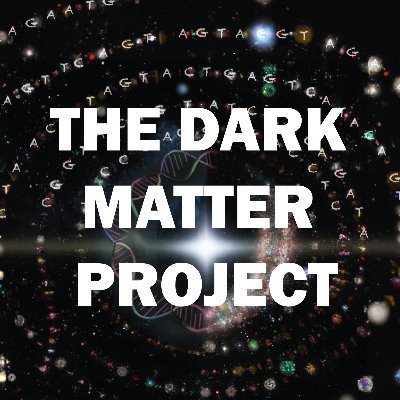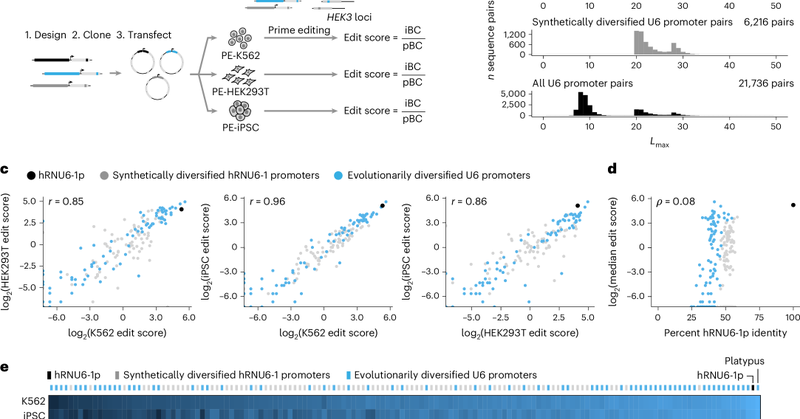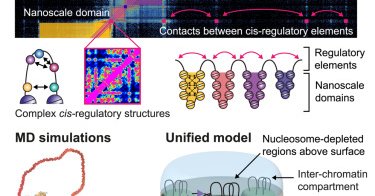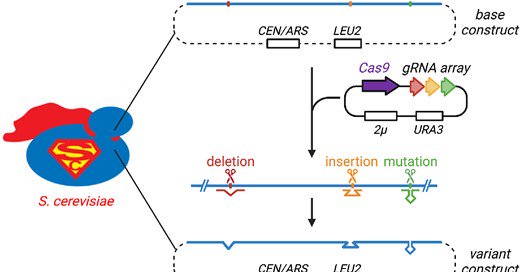
The Dark Matter Project
@DarkMatterDNA
Followers
1K
Following
553
Media
37
Statuses
355
Studying The Dark Matter of the Genome - everything noncoding 🧬 A collaborative scientific project at @nyulangone. Account managed by @BroshRan
New York
Joined January 2023
Today in @NatureBiotech, we report engineered DNA recombinases with up to 53% integration efficiency and 97% genome-wide specificity at an endogenous human locus, inserting large DNA cargoes up to 12 kb for stable expression in primary human T cells, stem cells, and non-dividing
Site-specific DNA insertion into the human genome with engineered recombinases https://t.co/4ICZ9ljmJz
17
88
505
Mapping chromatin structure at base-pair resolution unveils a unified model of cis-regulatory element interactions: Cell
cell.com
Li et al. apply base-pair resolution Micro Capture-C ultra to map chromatin contacts between individual motifs within cis-regulatory elements and reveal a unified model of biophysically mediated...
1
3
19
NYU Langone’s Rodent Genetic Engineering Lab (RGEL) is hiring a Microinjectionist! Join our team to work on cutting-edge genome engineering in mice. 🐁 Apply now:
jobs.silkroad.com
Find a career with NYU Langone Health
0
4
8
Super cool concept for driving tissue-specific transgene expression! https://t.co/7r1TltTksm
biorxiv.org
The process by which a foreign gene is introduced into a cell and translated into a functional protein is referred to as transgene expression. Understanding and optimising transgene expression is...
0
2
4
Did it work? Hell yeah! Read our two companion preprints to learn more: https://t.co/efyQXfeAVl
We're thrilled to publish 2 exciting preprints today on the molecular pathology of X-linked Dystonia Parkinsonism! https://t.co/V24f4O1U7a AND https://t.co/PWjE3KoX9X
@ccxdp @nyulangone
0
0
1
This recombination fuses mouse Taf1's exons 1-24 with human TAF1's exons 25-38 to form a fully functional gene that encodes mouse TAF1 protein. The recombination also removes all marker cassettes, making the final "converted" allele scarless.
1
0
0
The final step of engineering is what we call "conversion". It includes introducing Cre enzyme that induces recombination between the 1st loxP site in mouse Taf1 intron 24, and a 2nd loxP site located in human TAF1 intron 24.
1
0
0
This feat of engineering was performed using a variant of a method we recently published called mSwAP-In (mammalian switching antibiotic resistance markers progressively for integration). https://t.co/OGh8DCdUtn
nature.com
Nature - This study describes a method to insert large stretches of exogenous DNA into mammalian genomes, which is used to insert human ACE2 loci into mouse to produce a model of human SARS-CoV-2...
1
0
0
Next, we engineered mouse embryonic stem cells (mESCs), first with a loxP site in Taf1's intron 24, followed by integration of a marker cassette (a landing pad) downstream of the gene, and finally we replaced this cassette with the 78-kb human fragment.
1
0
0
Using CREEPY (CRISPR-mediated editing of synthetic episomes in yeast) we've substituted every amino acid that is different between humans and mice so that the expressed protein would be identical to mouse TAF1. https://t.co/e9cjbb3AKe
academic.oup.com
Abstract. Use of synthetic genomics to design and build ‘big’ DNA has revolutionized our ability to answer fundamental biological questions by employing a
1
0
0
But we were worried that the human TAF1 protein would be incompatible when expressed in mice (TAF1 is the largest subunit of the TFIID complex, a large protein group that is essential for initiating transcription of most genes).
1
0
0
We assembled this region from an XDP patient-derived BAC, using the superpower of S. cerevisiae (yeast), into a delivery-ready vector.
1
0
0
The pathogenic SVA insertion is in TAF1's intron 32, but we wanted to generate a partially humanized mouse model, and decided to include a 78 kb human region that spans TAF1 exons 25-38, including all intervening introns and the SVA.
1
0
0
This is the problem we had to tackle when we engineered the first mouse model of X-linked Dystonia Parkinsonism, a disease caused by an SVA (SINE-VNTR-Alu) retrotransposon insertion in the essential TAF1 gene.
1
0
0
The answer is quite simple of course: make it conditional. But what if the lethality is induced by a 2.7 kb retrotransposon insertion into an X-linked gene? How would you CONDITIONALLY introduce this element?
1
0
0
How could one engineer a mouse carrying a LETHAL allele? A thread🧬
1
2
3
One step closer to an LLM that understands novel DNA🧬 𝗜𝘁𝗲𝗿𝗮𝘁𝗶𝘃𝗲 𝗶𝗺𝗽𝗿𝗼𝘃𝗲𝗺𝗲𝗻𝘁 𝗼𝗳 𝗱𝗲𝗲𝗽 𝗹𝗲𝗮𝗿𝗻𝗶𝗻𝗴 𝗺𝗼𝗱𝗲𝗹𝘀 𝘂𝘀𝗶𝗻𝗴 𝘀𝘆𝗻𝘁𝗵𝗲𝘁𝗶𝗰 𝗿𝗲𝗴𝘂𝗹𝗮𝘁𝗼𝗿𝘆 𝗴𝗲𝗻𝗼𝗺𝗶𝗰𝘀. https://t.co/MOdUqgltN4 Congrats @andremrsantos and Matt Maurano!
1
24
114
Great 🧵 describing our innovative mouse model of XDP
I am proud to share our work on X-linked Dystonia-Parkinsonism — a rare neurodegenerative movement disorder driven by a SINE-VNTR-Alu retrotransposon insertion in the TAF1 gene. Read our two companion papers: 💠 https://t.co/O0jucmGttb 💠 https://t.co/kWgBjDtRAS 🧵 below!
0
0
2








